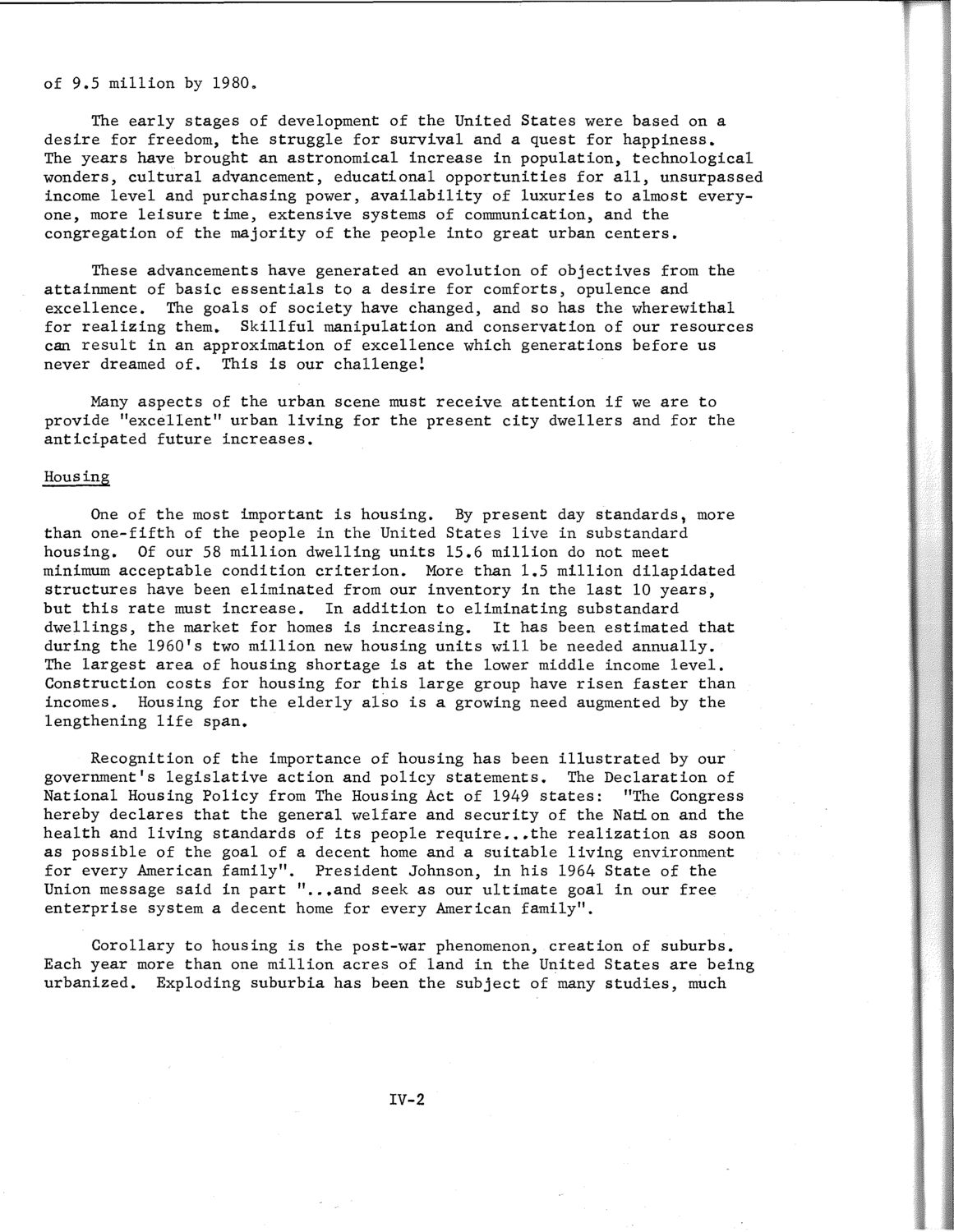| |
| |
Caption: SWE - Proceedings of the First International Conference of Women Engineers and Scientists
This is a reduced-resolution page image for fast online browsing.

EXTRACTED TEXT FROM PAGE:
of 9.5 million by 1980. The early stages of development of the United States were based on a desire for freedom, the struggle for survival and a quest for happiness. The years have brought an astronomical increase in population, technological wonders, cultural advancement, educational opportunities for all, unsurpassed income level and purchasing power, availability of luxuries to almost everyone, more leisure time, extensive systems of communication, and the congregation of the majority of the people into great urban centers. These advancements have generated an evolution of objectives from the attainment of basic essentials to a desire for comforts, opulence and excellence. The goals of society have changed, and so has the wherewithal for realizing them. Skillful manipulation and conservation of our resources can result in an approximation of excellence which generations before us never dreamed of. This is our challenge! Many aspects of the urban scene must receive attention if we are to provide "excellent" urban living for the present city dwellers and for the anticipated future increases. Housing One of the most important is housing. By present day standards, more than one-fifth of the people in the United States live in substandard housing. Of our 58 million dwelling units 15.6 million do not meet minimum acceptable condition criterion. More than 1.5 million dilapidated structures have been eliminated from our inventory in the last 10 years, but this rate must increase. In addition to eliminating substandard dwellings, the market for homes is increasing. It has been estimated that during the 1960's two million new housing units will be needed annually. The largest area of housing shortage is at the lower middle income level. Construction costs for housing for this large group have risen faster than incomes. Housing for the elderly also is a growing need augmented by the lengthening life span. Recognition of the importance of housing has been illustrated by our government's legislative action and policy statements. The Declaration of National Housing Policy from The Housing Act of 1949 states: "The Congress hereby declares that the general welfare and security of the Nation and the health and living standards of its people require...the realization as soon as possible of the goal of a decent home and a suitable living environment for every American family". President Johnson, in his 1964 State of the Union message said in part "...and seek as our ultimate goal in our free enterprise system a decent home for every American family". Corollary to housing is the post-war phenomenon, creation of suburbs. Each year more than one million acres of land in the United States are being urbanized. Exploding suburbia has been the subject of many studies, much IV-2
| |